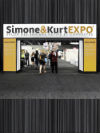The early 1900s, the first laser was developed as a potential danger to the human body. In 1905, Theodore Maiman described the beam as having the power of a single Gillette razor blade. But, it is not known if the beam could be able to burn anyone. Lasers with low power can cause damage to the eyesight. They can damage the retina due to reflections off shiny surfaces. The light can cause minor or even localized burns.
Lasers that make use of feedback through the optical cavity are the most sought-after. This permits the production of a beam of light. The optical cavity consists of two mirrors located on either side of a gain medium. When light hits this gain medium, it bounces off the mirrors, and then is amplified. The process continues until all the light in the beam has been passed through the output coupler which is an opaque mirror. When a beam has been created the beam can be used in a variety of ways.
The brightness of the laser beam is not the only factor to consider. The size of the beam is measured on the point where it exits the housing. There are a variety of ways to define this measurement. It is known as the Gaussian beams have a diameter of 1/e 2, or 0.135 times the maximum intensity value. A laser with a larger diameter will create a more narrow and more focused beam than one that has a lower diffraction limit.
A laser’s beam is the diameter measured at the exit point of the laser housing. You can measure this by a variety of methods. For example the definition of an Gaussian beam is 1/e2 (or 0.135) times the maximum intensity. These definitions are subjective , and it’s best green laser pointer to speak with an expert before buying a laser. Most times the beam’s maximum diameter will be less than the diffraction limit.
The diameter of an laser beam is the measurement of the beam’s width at the exit face of the housing of the laser. The Gaussian-shaped laser beam is the distance between the two points in the marginal distributions of their intensity. A narrower wavelength will have a larger diameter. The same is true for a Gaussian-shaped beam with a small-diffraction-limited intensity.
A flashlight’s beam is spread through a lens to form an undefined cone. The beam of a laser is smaller and more narrow and consequently more precise. It is called highly collimated since it’s narrower and longer-range than the beam of a flashlight. It has a range of just a few inches, and is focused on the object it is targeting. It can also be employed to track and detect missiles.
The beam’s diameter is the measurement of a beam of laser measured on the outside of the laser housing. The diameter of a laser beam may be measured in a variety of ways. For example, the definition of a Gaussian light will have an area of 12. This is equivalent to 0.135x maximum intensity. The application can be examined using the wide-diameter. In addition to measuring the size of a laser, the intensity of the beam can be measured as well.
A laser beam’s power is determined by the frequency at which it travels. Although it’s often visible, it may be too high for some applications. It’s difficult to connect the wavelength of light with other sources. A high-powered laser will produce spots with an enormous luminosity. This is due to the fact that the light will be distorted by the object’s diffusion. It is harder to discern the object if the beam is weaker.

The diameter of the laser beam is the length of the laser’s wavelength, which is determined in various ways. The Gaussian beam’s width is the distance between two points in the marginal distribution. The intensity of the beam is one-half of e2, which is the highest intensity value. The measurement is commonly used to determine the length of an laser. If a diameter is too big, it can be dangerous to a person, or to an object, best green laser pointer it can be fatal.
Lasers are intense light sources that can be utilized to shape and cut objects. Lasers emit light with one-wavelength. This is why the beam is small. The laser’s wavelength is what makes a beam so sharp and how it can be used in so many ways. The wavelength of the laser is its wavelength. Its frequency is the length of a single laser.


